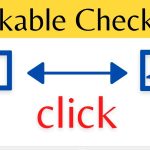Node.js has exploded in popularity over the past few years, becoming a top choice for building scalable network applications. With its event-driven, non-blocking I/O model, Node.js makes it easy to develop fast and efficient web servers and web applications. However, Node.js itself is fairly barebones. It leaves a lot of the heavy lifting to frameworks and libraries. This allows developers great flexibility but also introduces a challenge – which Node.js framework is the right choice for your project?
There are a dizzying number of options, each with their own philosophies, strengths, and drawbacks. In this guide, we’ll survey the most popular Node.js frameworks and offer comparisons to help you decide which is the best fit for your needs.
What is a Framework?
Before surveying different frameworks, let’s clarify what exactly a framework is.
A framework is a collection of reusable code libraries and tools that provides a standard structure for developing software applications. Frameworks exist to speed up development by handling common tasks so developers can focus on the unique aspects of their project.
Some things frameworks typically provide include:
- Routing – Maps URL paths to specific functions to handle requests and return responses
- Middleware – Functions that process requests/responses as they move through the layers of an application
- Templating – Renders HTML views using data provided by the application
- Database Access – Interfaces for accessing and interacting with databases
- Authentication – Manages user identity, roles, sessions
- Internationalization – Support for multiple languages and locales
The framework manages all these common facilities so developers don’t have to reinvent the wheel each time they build an application. You just have to learn the conventions of the framework and code your specific application logic.
Node.js frameworks additionally tend to provide tools and capabilities to help manage asynchronous code flow. This is essential for leveraging Node’s asynchronous, event-driven architecture.
Why Use a Framework?
Node.js itself provides excellent low-level performance and flexibility. So why use a framework at all?
Here are some key benefits frameworks provide:
Faster Development – By providing reusable components for common tasks and established conventions, frameworks significantly speed up development.
Consistency – Frameworks encourage a consistent structure and coding style across your organization and codebase. This makes code easier to maintain.
Stability – Popular frameworks are used by many developers. This widespread community testing helps identify and fix bugs faster.
Ecosystem – Frameworks develop rich ecosystems of open source libraries and tools that work seamlessly with the framework.
Structure – Frameworks provide proven patterns for structuring and organizing code. This helps manage complexity as applications scale.
Best Practices – Frameworks incorporate industry best practices out of the box. This saves you reinventing the wheel.
The right framework improves productivity, enforces good practices, and sets your project up for success as it grows.

Overview of Popular Node.js Frameworks
There are tons of Node.js frameworks available. Here we’ll provide an overview of some of the most popular options:
Express
Express is the most minimal and flexible Node.js framework available. It provides a thin layer on top of Node’s APIs to facilitate common web application development tasks.
Philosophy – Minimalist, unopinionated, focused on core web app features
Strengths – Great flexibility, simple and lightweight, easy to integrate other modules
Use Cases – Good general purpose framework, ideal for simpler apps not requiring heavy scaffolding
Express is a great starting point for those new to Node.js because of its simplicity. More complex or enterprise applications may benefit from more opinionated frameworks with built-in capabilities.
Koa
Koa is an emerging framework created by the same team behind Express. It aims to be even more streamlined and modular than Express.
Philosophy – Small, expressive, and modular app building
Strengths – Modern async/await support, elegant middleware flow, easy customization
Use Cases – APIs, web apps, universal JS apps, microservices
Koa improves upon Express by ditching callbacks in favor of async/await for cleaner async code handling. Its elegant middleware flow makes writing reusable modules easy. Koa is a great choice for modern Node.js applications.
Sails
Sails describes itself as the most popular MVC framework for Node.js. It generates boilerplate project code and provides structure for developing database-driven apps.
Philosophy – Model-view-controller framework for building practical, production web apps
Strengths – Rapid prototyping, automatic REST APIs, easy integration with databases
Use Cases – Prototyping apps quickly, building robust production web apps and APIs
Sails lowers the barrier to creating data-driven web applications. It’s a good choice for quickly scaffolding out an app backed by a SQL or NoSQL database.
Meteor
Meteor is a full-stack JavaScript platform for developing real-time web and mobile apps. Meteor provides an integrated framework for code on both the client and server.
Philosophy – Single language (JavaScript) across full stack, integrated platform, real-time reactive programming
Strengths – Excellent for real-time apps, fast prototyping, huge ecosystem of packages
Use Cases – Real-time web and mobile apps, reactive apps, rapid prototyping
Meteor uses a publish/subscribe pattern to automatically push data changes to clients in real time. This plus its excellent libraries make Meteor a top choice for building reactive, real-time applications.
Nest
Nest offers an out-of-the-box application architecture for developing scalable server-side Node.js apps. It draws heavy inspiration from Angular.
Philosophy – Scalable application architecture following SOLID principles
Strengths – TypeScript support, module organization, compatibility with Express/Fastify
Use Cases – Building scalable and testable back-end apps and microservices
Nest offers opinionated application structuring with built-in support for practices like dependency injection. This makes it a good option for large enterprise-grade applications.
AdonisJS
AdonisJS describes itself as a “fully-featured framework for Node.js”. It offers a lot of batteries included out of the box.
Philosophy – Batteries included framework for quicker and structured development
Strengths – TypeScript support, object-oriented MVC structure, excellent for SQL databases
Use Cases – Full-stack web apps and APIs, especially when using SQL databases
Adonis offers strong abstraction and rapid development. It’s a good option when you want a fully-featured framework with little configuration needed upfront.
Hapi
Hapi is a framework for building applications and services that enables greater productivity, reliability, and scalability.
Philosophy – Robust services and apps with built-in security, input validation, and other safeguards
Strengths – Strong focus on security, performance, and stability for enterprise apps
Use Cases – Building robust and enterprise-grade backend services and APIs
Hapi is built around principles like authentication, validation, and caching. This makes it ideal for enterprise backends and API services requiring high scalability and reliability.
Next.js
Next.js is a popular React framework that enables server-side rendering and static site generation for React apps.
Philosophy – Build production-ready universal React apps with optimized pre-rendering
Strengths – Excellent developer experience, optimized performance, vast plugin ecosystem
Use Cases – React web apps where SEO and performance matter
Next.js supercharges React development with built-in capabilities for server-side rendering, static site generation, routing, and more. An excellent option for production React applications.
Nuxt.js
Nuxt is a Vue-focused alternative to Next.js, providing server-side rendering, static site generation, routing, and more.
Philosophy – Framework for quickly building universal Vue.js applications
Strengths – Rapid development of SEO-friendly and performant Vue apps
Use Cases – Production-ready Vue.js SPAs and PWAs
Nuxt makes it dead simple to develop universal Vue.js applications. It’s a top choice for SEO-friendly, high performance Vue projects.

Key Considerations When Choosing a Framework
With this general lay of the land, let’s dig into key factors to consider when selecting a Node.js framework:
1. Technical Fit
The most basic criterion is whether the framework’s capabilities match your technical needs and priorities.
For example, if real-time performance is critical, Meteor is an obvious choice. For server-rendered React apps, Next.js is the go-to.
Consider factors like:
- What type of app are you building (web, mobile, API, etc)?
- Will it require server-side rendering or static generation?
- Do you need to support multiple data sources or databases?
- Will it require real-time data streaming?
- How critical is performance vs ease of use?
Choose a framework tailored for your app’s specific technical requirements.
2. Simplicity vs Scaffolding
Node frameworks fall on a spectrum from minimalist to highly opinionated.
On one end you have micro-frameworks like Express which leave most decisions up to you. The simplicity provides flexibility at the cost of requiring more manual setup.
On the other end you have highly structured frameworks like Nest and Adonis. They provide extensive scaffolding and an architectural blueprint to follow. The tradeoff is less flexibility.
If you want minimal code to dive right into custom app logic, Express or Koa are great. For larger apps wanting more built-in architecture, Nest or Adonis may be preferable.
There’s no right answer – it depends on your team’s needs and tastes.
3. Community & Ecosystem
The community around a framework is a key indicator of longevity and future support. A large community means:
- More resources and learning materials available
- A larger pool of developers familiar with the framework
- Widespread testing and contribution improving quality
- More add-ons, plugins, libraries to leverage
Established tools like Express, Meteor, and Sails have very strong communities. Newer options are gaining traction but have smaller ecosystems.
4. Long Term Maintenance
Will the framework continue receiving updates over time? Or is development stalled?
You want to ensure the framework has committers dedicated to maintaining it long-term. Watch for signs that a framework is no longer being actively maintained.
Tools like Express, Nest, and Adonis are well-maintained and release frequent updates. Do due diligence researching frameworks you’re less familiar with.
5. Your Team’s Experience
Consider your team’s background and experience. Choosing a framework your team is already comfortable with will minimize the learning curve.
For example, if your team has React experience, Next.js is an easy leap. For Vue developers, Nuxt is ideal.
Even if a tool may have a steeper learning curve, it can be worth investing if it best fits your needs. But factor in the time cost of training your team.
Final Thoughts
- There is no one-size-fits-all solution. Evaluate frameworks based on your specific needs.
- Lean towards established, well-supported frameworks for stability. But don’t rule out newer options which may better fit your goals.
- Look for frameworks with momentum that are improving over time, not stagnating.
- For simpler apps, start with minimal frameworks like Express or Koa. For more complex projects, consider more structured frameworks.
- Factor your team’s background into the decision. Familiarity reduces the learning curve.
- Focus on frameworks that provide the capabilities needed to build your application, rather than just following hype and trends.
The Node.js ecosystem continues evolving rapidly. There are more great framework options than we could cover here. The landscape may look very different in a few years!
Keep assessing projects as they mature, and aim make choices based on your specific needs. With so many high-quality tools now available, you have excellent options for building your next Node.js application.
Frequently Asked Questions
Q: What is the most popular Node.js framework?
A: Express is likely the most widely used Node.js framework. But many other frameworks like Nest and Adonis have rapidly grown in usage as well.
Q: Should I use a framework or raw Node.js?
A: Frameworks provide a lot of benefits in terms of faster development, structure, and best practices. In most cases a framework will be preferable over raw Node.
Q: Is Meteor still a viable framework choice?
A: Meteor is not as trendy as it once was, but still powers many production applications. It remains an excellent choice for building real-time reactive apps.
Q: What framework is best for beginners?
A: Express provides the simplest starting point for Node.js beginners. It has extensive resources and a gentle learning curve.
Q: What framework is best for large enterprise apps?
A: Frameworks like Nest and Adonis provide robust architectural foundations suitable for large, complex applications. They enforce proven patterns for structure and maintainability.
Conclusion
Node.js frameworks provide many benefits in terms of faster development, project structure, stability, and leveraging community knowledge. Express and Koa offer lightweight starting points, while tools like Nest and Adonis provide more built-in capabilities.
Optimizing content structure and implementing effective SEO strategies, such as those outlined in content structure and SEO: crafting web pages for high visibility, is crucial for enhancing online presence. Just as careful consideration of technical requirements, team experience, and real-time needs is essential when selecting a framework for your application, making an informed choice with evolving options like Node.js frameworks can significantly boost productivity and set your project up for success.







